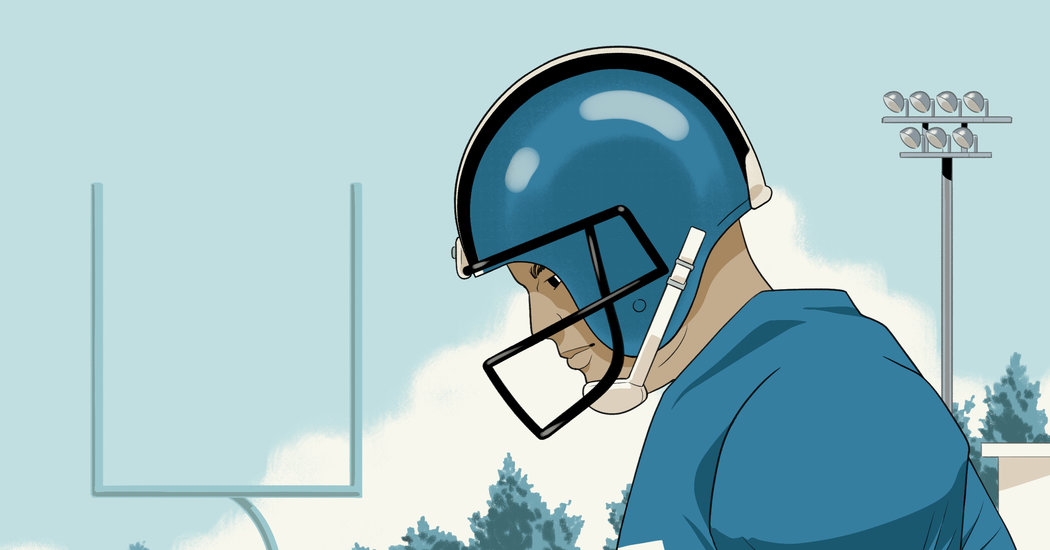In college, Josh Martin struggled to answer a question that stumps plenty of students: What’s next?
Martin played football for Columbia University from 2009 to 2012 but wasn’t expecting his career to consist of tackles and sacks. He majored in anthropology and considered law school, but a student-athlete adviser told him he didn’t have the grades to get into a top program.
“I wasn’t quite sure what I would do after school,” Martin said. “I didn’t really have any career goals. That was an issue for me in college. I didn’t have that sense of purpose.”
The adviser recommended that Martin and his teammates sign up for LinkedIn to start networking. So he joined, using his football headshot as a profile picture. However, before he had to enter the rat race, the N.F.L. called with a job offer. In 2013, the Kansas City Chiefs hired Martin as an undrafted free agent. Since then, he’s also been employed as a linebacker by the Tampa Bay Buccaneers, New York Jets and New Orleans Saints.
Over the years, Martin occasionally returned to LinkedIn to make connections and pursue business ventures off the field, like endorsement deals. When the pandemic hit, pressing pause on pro sports, there was suddenly much more time to think about life after football. For example, Martin is interested in collaborating with wealth management firms to help fellow players prepare for their next career.
“The goal for me is to build a community and use it as a resource for knowledge,” Martin said. “People want to be around athletes. So how can I use my platform?”
We’re now in an era when jocks aspire to be more than just athletes. They have platforms and portfolios. They’re storytellers and investors. Fans expect to see players sending petty tweets and posting photos of their latest fits on Instagram. Lately, though, more athletes have turned to social media to explore what’s possible outside of their day jobs.
LinkedIn was founded in 2002 as a place where anyone could post digital resumes, connect with professionals and apply for work. Today, athletes can publish articles and videos into a curated feed and send direct messages to their connections.
Like all social networks, LinkedIn, which has grown to 700 million members, has struggled to address racism and censorship on its platform. But given the buttoned-up nature of the site, there’s less worry about comments from internet trolls, salty fans and drunk uncles compared to Facebook or Twitter.
“Social media seems to have a negative connotation surrounding it,” said Tony Gonzalez, the Hall of Fame tight end who retired from the N.F.L. in 2013 after 17 seasons. “I found LinkedIn to be a place that has a lot of positivity about how people are growing in every industry.”
Gonzalez, an N.F.L. studio analyst on FOX, joined LinkedIn last year to promote his new podcast, “Wide Open.” He regularly posts video excerpts from the latest episode with guests ranging from Jessica Alba to Neil deGrasse Tyson.
“When joining LinkedIn, I wanted to share with others how I became successful,” Gonzalez said. “I also get to see what others are doing to succeed so I can learn from them.”
For modern athletes, success means something very different than it did to those who competed before the internet. Players don’t just want to play ball. They want to own businesses and become investors.
They also love a creative job title. A number of players list themselves as venture capitalists on LinkedIn. Some are entrepreneurs, others C.E.O.s. Former N.B.A. player Baron Davis is a “Master Connector” and “occasional DJ.” Renaissance man Shaquille O’Neal, in addition to being a business mogul, also gave himself the title “purveyor of fun.”
This is a far cry from players in the ’60s and ’70s who had to take second jobs in the off-season selling insurance to earn extra income.
Of course, with extra cash comes extra risk. History is riddled with cautionary tales of pro athletes who lost it all after getting taken advantage of and spending recklessly. In 2009, Sports Illustrated reported that roughly 60 percent of N.B.A. players went broke within five years of retirement, while four out of five N.F.L. players were in financial distress within two years of retirement.
“An N.B.A. career is very short,” said Pau Gasol, the six-time All-Star center who joined LinkedIn last year to highlight his philanthropy and volunteer work. “When you’re just thirty, you can be retired and then you have a whole life ahead of you, but you are not prepared to manage many aspects of your life.”
Professional athletes of all ages had to confront that reality earlier this year when it was unclear if their leagues would return because of Covid-19.
To prepare for uncertainty, players have put more emphasis on business education and financial empowerment over the last decade. The leagues now host seminars to help athletes manage their money. In 2017, Harvard Business School introduced a program called “Crossover Into Business,” which pairs pro athletes with two Harvard M.B.A. student mentors to “develop their business acumen.”
With in-person meetings discouraged for the moment, LinkedIn can be an especial lifeline.
For Gasol, who left medical school at the University of Barcelona as a teenager to turn pro, it’s a way to stay engaged off the court. “I haven’t really gotten a chance to get the education that I probably wanted earlier in my life,” he said. “As I’m moving towards a different part of my life, transitioning to different goals and challenges ahead, I think LinkedIn is the perfect network for me.”
And in the waning moments of a year when the roar of the crowd fell silent, the pro athletes on the platform are grateful to focus less on the present and more on what’s next.
“I’m not a superstar by any measure. It gives the middle-class players like myself an opportunity,” Martin said. “I think that’s really powerful.”
[ad_2]
Source link


